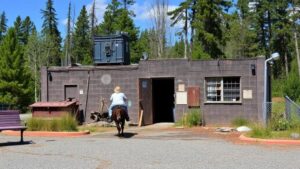Decoding Weathered Treasure Maps Found in Forgotten Ship Logs
Decoding Weathered Treasure Maps Found in Forgotten Ship Logs
The allure of treasure hunting has captivated adventurers and scholars alike for centuries. One of the most intriguing avenues of exploration is the decoding of weathered treasure maps discovered in forgotten ship logs. These artifacts not only provide insight into maritime history but also lead to potential discoveries of lost wealth. This article delves into the methodologies, historical contexts, and the interpretative challenges associated with these extraordinary documents.
The Historical Context of Ship Logs
Ship logs have been indispensable navigational tools since the Age of Exploration in the 15th century. These logs served multiple purposes: documenting navigational information, weather conditions, and the crews daily activities. In many cases, ship logs also contained maps or references to locations with alleged treasures. For example, the logs of famed navigators like Christopher Columbus often indicated new territories that could potentially harbor riches.
According to the National Oceanic and Atmospheric Administration (NOAA), the main purpose of these logs was to ensure safe passage and optimal navigation routes. But, hidden within the mundane entries of weather patterns and ports of call are clues that can lead modern treasure hunters to buried riches. The complex interplay of natural phenomena and human endeavor makes ship logs invaluable for historical geography.
Understanding Treasure Maps
Treasure maps vary significantly in format and presentation. may include symbols, estimated coordinates, landmarks, and even cryptic messages. Decoding these maps requires a multi-faceted approach:
- Symbol Interpretation: Many maps utilize symbolism that is specific to the era. For example, a skull and crossbones often signifies danger or lost treasure. Understanding these symbols requires knowledge of historical maritime culture.
- Cartographic Techniques: Early maps employed various techniques that can confuse modern readers. Techniques such as rhumb lines and compass roses should be recognized and interpreted correctly to discern geographical reference points.
- Historical Contextualization: Each map must be placed within its historical context to be properly understood. This may involve research into maritime trade routes of the period, shipwreck occurrences, and known piracy hotspots.
Challenges in Decoding
Decoding weathered treasure maps is fraught with challenges. physical deterioration of paper over time can obscure critical information. Elements such as faded ink, tears, or water damage complicate the reading process. Experts often employ digital imaging techniques to enhance visibility, revealing textual or graphical elements that may have been lost to time.
Plus, some maps may have been deliberately misleading. For example, the infamous Captain Kidd was rumored to have created false maps to protect the locations of his actual treasures. Understanding the motives behind map-making can be as crucial as the decoding itself.
Case Studies of Successful Discoveries
The Atocha Shipwreck
The Nuestra Señora de Atocha was a Spanish galleon that sank in 1622 off the coast of Florida. Ship logs from Atocha revealed the location of the shipwreck, although they were cryptic in their presentation. Utilizing historical cartographic knowledge combined with underwater exploration technology, treasure hunters eventually recovered approximately $450 million worth of gold and silver from the wreck site in 1985. This discovery illustrates the immense value that hidden clues within ship logs can hold.
The Urca de Lima
The Urca de Lima sank in 1715 during a storm, leading to the loss of a significant amount of treasure. In 1965, a team of treasure hunters studied ship logs that mentioned its last known coordinates and utilized both underwater archaeology and archival research to locate artifacts worth millions. This situated the importance of a thorough investigation into ship logs in conducting successful treasure hunts.
Actionable Takeaways
For aspiring treasure hunters and historians, decoding weathered treasure maps found in forgotten ship logs presents exciting opportunities. Here are some actionable steps to consider:
- Invest in Historical Research: Familiarize yourself with the history of maritime exploration and artifacts, enabling better understanding and appreciation of the context behind the maps.
- Enhance Technological Aptitude: Learn to use digital imaging and restoration techniques that can aid in deciphering damaged documents.
- Network with Experts: Collaborate with historians and archaeologists who specialize in maritime history to expand your knowledge base and methodologies.
To wrap up, the process of decoding weathered treasure maps found in forgotten ship logs is an intricate blend of art and science. By understanding historical contexts, mastering interpretive techniques, and overcoming decoding challenges, one may unlock the secrets of the seas and potentially unearth hidden treasures.
